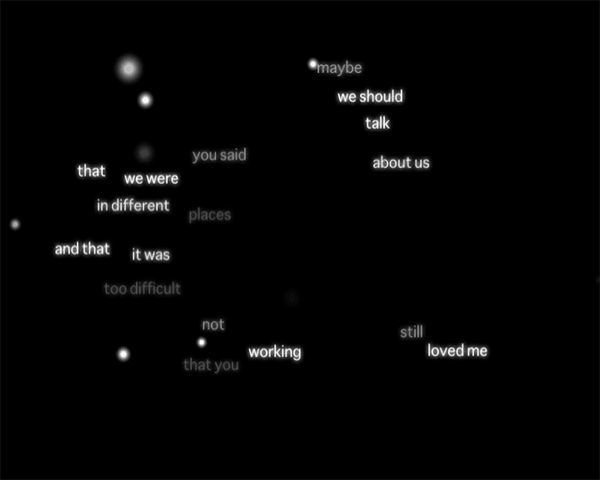In 1979, Video Killed The Radio Star became a worldwide radio hit for British new wave synth pop band The Buggles. The infectious dance tune was a powerfully nostalgic ode, recognizing that the culture and standards of the past were being erased within the rapid rise of a new ‘disposable’ society fuelled by rapid technological advances. It is interesting to note that this song’s music video was the first to be aired on MTV at its launch @12:01am, August 1, 1981. It was also included in the bands first album, The Age of Plastic. And we haven’t slowed down; in fact, the pace of technology has significantly advanced.
Remember when we used to think that video cassettes were high tech? Telex became fax, walk-mans became disc-mans, video cassettes became laser discs. Laser Discs became DVD’s. Audio cassettes & vinyl became compact disc – but isn’t it great that vinyl has made a resounding comeback! Computers the size of ovens became laptops, phones became cordless, then independently mobile, linked to national digital networks, with in built cameras and video functions that provide ample fodder for social media.
It is now the age of Internet/Digital culture. It is the age of Andrew Yang and Elon Musk. It is the age of climate change and the professed 4th industrial revolution. The Internet and streaming services have supplanted all digital media delivery vehicles. We can watch movies and listen to music from half a century ago without leaving our living room – digitally restored and streaming 24/7 on your phone, laptop or widescreen TV.
OK, so lets rewind to the 1960’s and the moment video art was created, when SONY released an economical consumer piece of video camera equipment that was to redefine the nature of art. It provided a bold new way of representation, a new instrument capable of recording and presenting new statements, shattering an art world where painting, photography and sculpture were the norm. Early examples of video art include Nam June Paik’s Video Cello, 1964 – Walker Art Centre, Minnesota and Andy Warhol’s Sleep, 1963 – Museum of Modern Art, NYC.
Within a generation, video has become a fully accessible medium, even more so now with iPhone and Android tech. Video art has become a valid method of artistic creation, widely accepted as its own genre. Today, the medium includes traditional film, digital video, virtual reality, video games and phone apps. Video art is collected privately and publically and traded at auction. The very nature and representation of art has been rewritten by a new generation of artists enabled by technology and unconstrained by tradition. In 2019, American artist Arthur Jafa was awarded the prestigious Golden Lion at the Venice Biennale for his film The White Album. In 2018, all eight nominees shortlisted for the Turner Prize worked in Video including New Zealand born artist Luke Willis Thompson.
But let’s rewind again, and look at a principal message of this exhibition and to pick up a little bit more on that Buggles song. It is always good to look back once in a while to acknowledge and value where we have come from.
The City Art Gallery, Wellington stated, 'Australian artist Grant Stevens finds a kernel of truth within the saccharine cliché. His computer-generated videos, which feature texts sourced from TV, movies, and the Internet, explore the way human psychology and communication are being shaped in the digital era. Steven’s works are at once laughably banal and profoundly true. Crushing collages generic accounts of bruised and broken hearts to a cheesy piano soundtrack. The artist pares things back to reveal the machinery of emotional manipulation, but also the human psychology that is prepared to be manipulated. The work pulls us in, and it is about how it pulls us in.'
In 2004, Reuben Paterson stated, 'The act of looking twice has always inspired and intrigued me; it’s the fact of seeing, and of not being able to see, of knowing, and of yet to learn, of being drawn into a picture to discover multiple layers of visual truths, those images that are obvious, and those that are hidden. Optical art in my opinion places a binding emphasis on this form of perception. Optical art distils the principles of art and uses them singly with force and commitment. It is the art of pure essentials that relies on total abstraction and visual confrontation.'
This was the core statement of the exhibition Narcissus which included the digital animation Te Pütahitanga ö Rehua 'the very old and traditional word to describe the water used for blessing yourself after being exposed to the many realms Māori live in.' The black and white designs of Te Pütahitanga ö Rehuasurge in waves, transfixing the viewer with its mesmeric movement. 'Narcissus is about the reflection of us on land, or the reflection of what exists today and what the land has truly absorbed; the histories of Māori people and how they inhabit New Zealand in a memory that doesn’t exist for anybody. In comparison, you find English histories in monoliths and heritage site buildings.'
Hye Rim Lee’s 2005 video Lash, formed part of the broader exhibition Powder Room shown at Gus Fisher Gallery, Auckland. The video is centered on TOKI, a pretty doll-like cyborg character. TOKI has all the conventional attributes of clichéd femininity valued in Korean culture. TOKI is the embodiment of fantasy, sensuality, and seduction. Here she lures the audience by inviting the (male) viewer into a fantasy, suggesting that she possesses the power to fulfill his desire in the creation of an ideal, virtual beauty. TOKI’s exaggerated eyelashes epitomize the powerful image of an idealised beauty, and the ability of digital and surgical construction to create a ‘plastic’ fantasy world.
Re-looking at Lash in the age of the #metoo era serves as a powerful reminder to the enduring global narrative of gender equality and sexual discrimination. While the intent of these artworks was not to wax lyrical about the past, they represent a period where video art became mainstream and address social issues that are still relevant today. They are about how we interact and continue to interact with each other across sexual, emotional and cultural thresholds in the age of advancing digital technology.
For the design and presentation of this show, we converted the ‘old’ DVD files to flash drives that plug directly into new generation TV screens. It provides an uninterrupted visual experience, unencumbered by wires and excess equipment, as was previously the norm. While I realize that this may semi-disrupt the narrative of the exhibition premise, I took a cue from that Buggles song – to give the show a more relatable ‘today’ appeal.
Rewritten by machine on new technology
And now I understand the problems you can see…
Ben Bergman.


